Less than half an hour by train from Vienna is Klosterneuburg, a medium-sized center of a renowned wine-growing area on the outskirts of the Austrian capital. Here, in 1114, an abbey was founded by Leopold III of Babenberg, the future patron saint of Austria, together with his wife Agnes of Waiblingen, which from 1133 would be governed by Augustinian canons. The imposing building, set on a rise directly overlooking the Danube, preserves within it an extraordinary artifact of medieval goldsmithing, one of those works that mark the course of art history. Unfortunately, the work can only be seen on a guided tour, and there is very limited time to enjoy it. This work is known as the Klosterneuburg Altar, but it originally served as a pulpit covering inside the abbey church.
On September 13, 1330, a devastating fire broke out in the town of Klosterneuburg, also involving the abbey: the panels were saved, but some glazes were lost. Provost Stephen of Siedendorf, who was in charge of rebuilding the monastery, commissioned a Viennese goldsmith’s workshop to make six new enamels to replace the lost ones, and on that occasion the panels were rearranged as an altarpiece with a central body and side wings. In addition, four large tempera paintings were added to the back, which are now preserved with the original wooden support separately from the altar. In the Baroque rearrangement of the church, the altar was placed in the chapel of St. Nicholas, inside the treasure chamber and near the tomb of the founder of the abbey. Its present location, above the tomb of St. Leopold, dates from 1833. During the suppression of convents ordered by the National Socialists in 1941, the altar was to go to Berlin as a jewel for the Führermuseum project. Between 1949 and 1951 some missing parts were fixed.
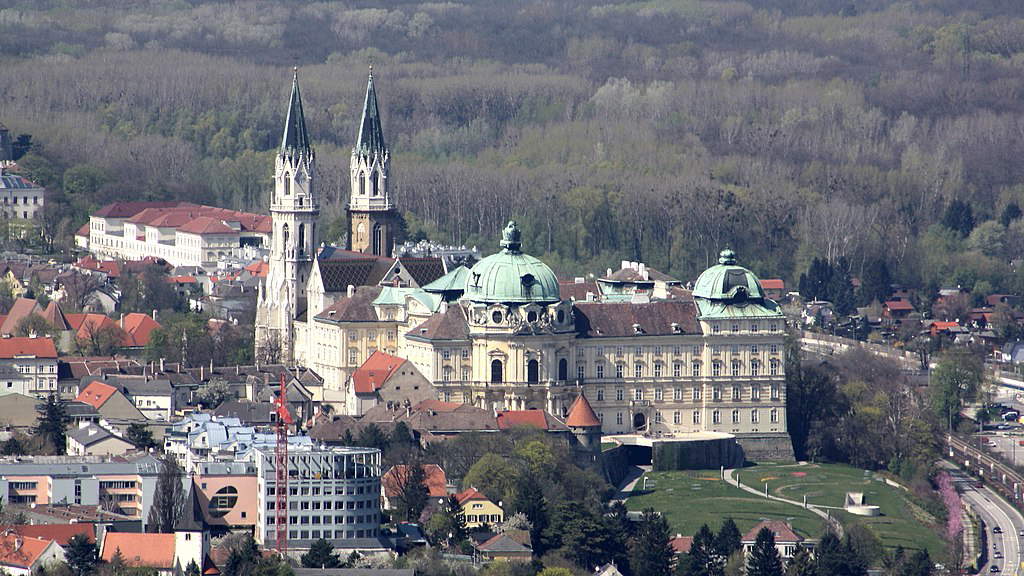 |
| Klosterneuburg Abbey. Photo Bwag |
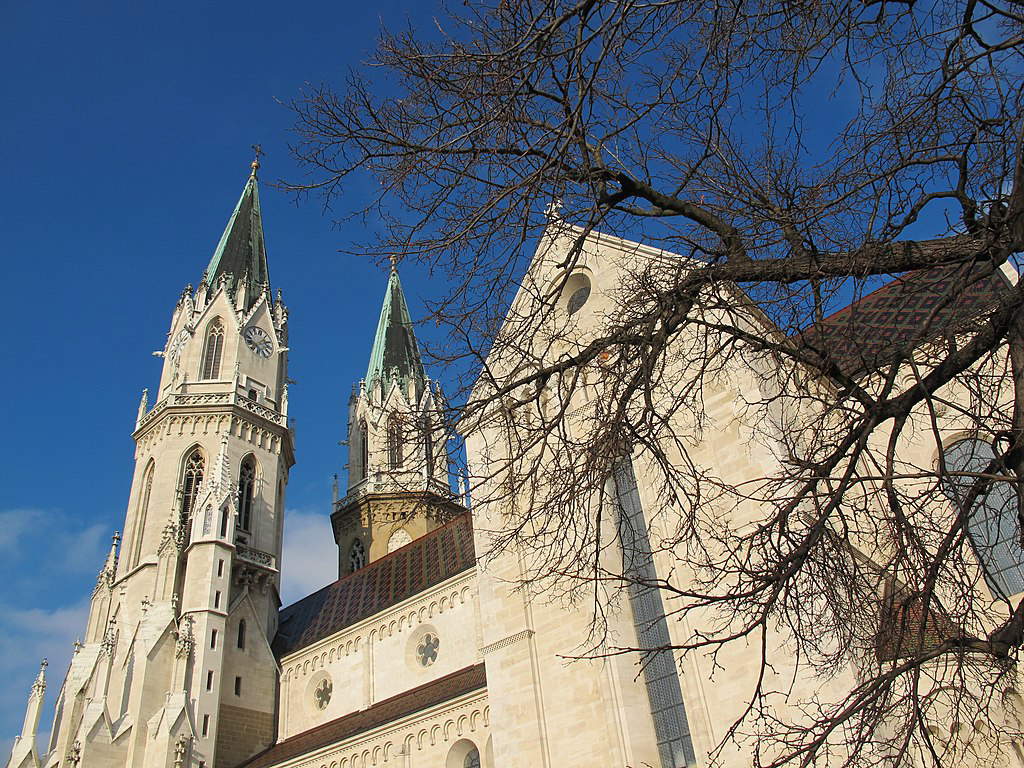 |
| The abbey church. Photo by Anna Saini |
The dedicatory inscription on the altar shows the name of the artist who made this work: “Nicolaus Virdunensis” ("To you, Virgin Mary, Wernher dedicates this work made by Nicolaus of Verdun.) Nicolas de Verdun (Verdun, c. 1130 - Tournai, after 1205) is considered the highest point reached by Mosan goldsmithing. Indeed, the area between the Rhine and Meuse rivers was an important center of goldsmith production throughout the 12th and early 13th centuries, where various personalities distinguished themselves through their creations. Verdun was the center of the upper Meuse, close to the cities of Metz, where the production of ivory artifacts was flourishing, and Reims, which had been one of the most important centers ofCarolingian art, particularly for miniature art.
Nicolas de Verdun is one of the greatest artists of the Middle Ages, one of the key figures in understanding the so-called classicist turn in Western art in the late 12th and early 13th centuries, which critics later referred to as the “1200 style.” Only three works are attributed to the Mosan goldsmith: the altar for Klosterneuburg (signed), the Tournai reli quary, and the reliquary of the Magi, preserved in Cologne Cathedral.
The artifact made for Klosterneuburg consists of three horizontally oriented boards decorated with 51 champlevé enamels , a technique in which the honeycomb in which the glass paste will be laid is carved directly into the metal sheet. In this specific case, one can speak of figure-sparing champlevé enamels on a gilded enameled ground. The choice of using a blue enamel for the background of the scenes further highlights the metal spared figures. It can be seen that a very harmonious color choice was made in these enamels, involving the use of a limited but balanced range of colors, with blue, light blue, and red predominating, while other colors are also present in the frames. The background of the double-column architectural decorative motif inserted to divide the various scenes was made by mixing various glazes to achieve a marbled effect. The various inscriptions and explanatory inscriptions in this work are also achieved by hollowing out the metal foil and filling the alveolus with a black enamel.
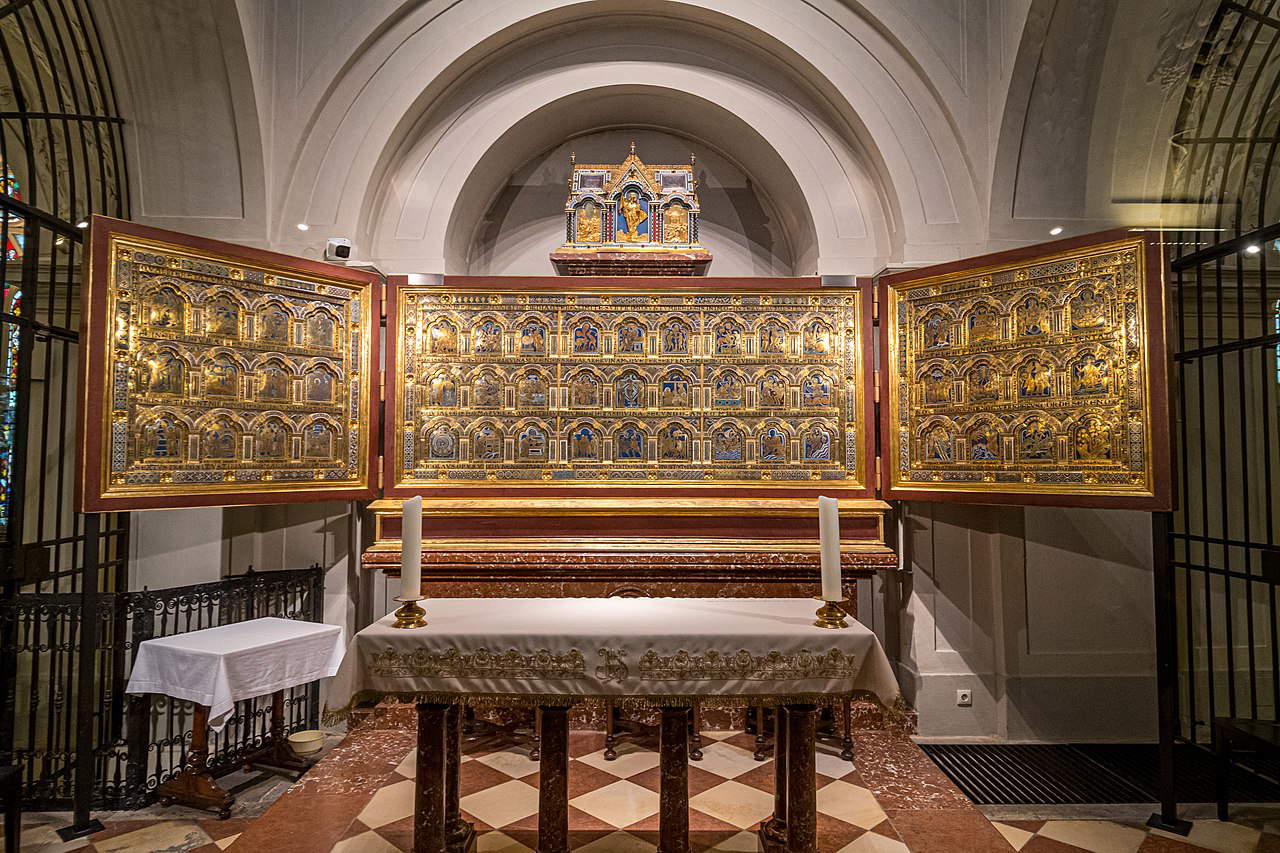 |
| Nicolas de Verdun, Altar of Klosterneuburg (1181; gilded bronze and enamel; Klosterneuburg, abbey church) |
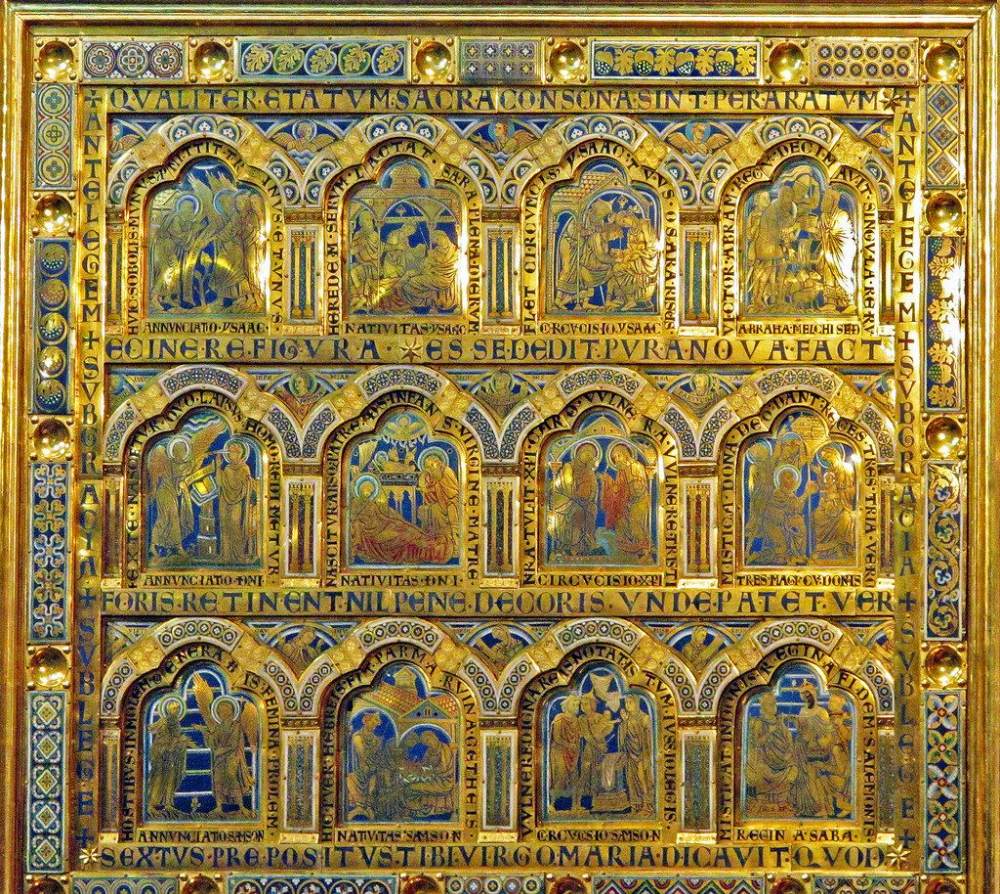 |
| Altar of Klosterneuburg, left compartment |
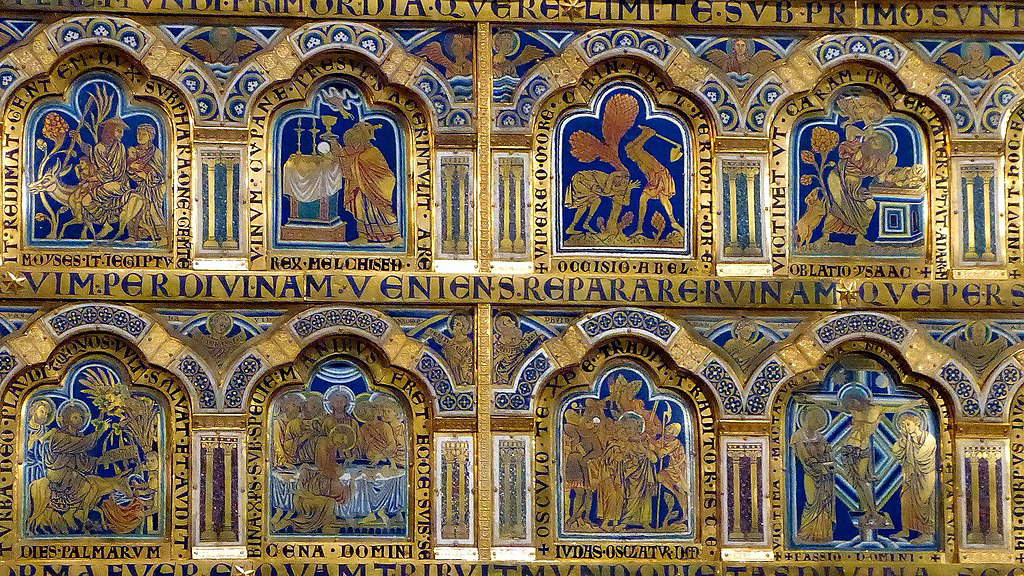 |
| Altar of Klosterneuburg, details |
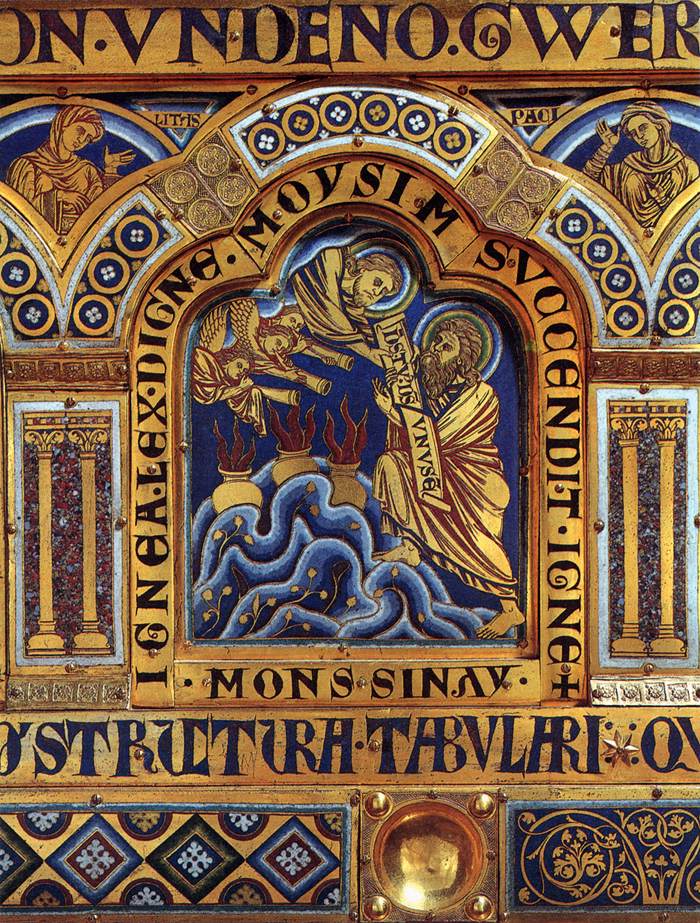 |
| Altar of Klosterneuburg, detail with Moses on Sinai |
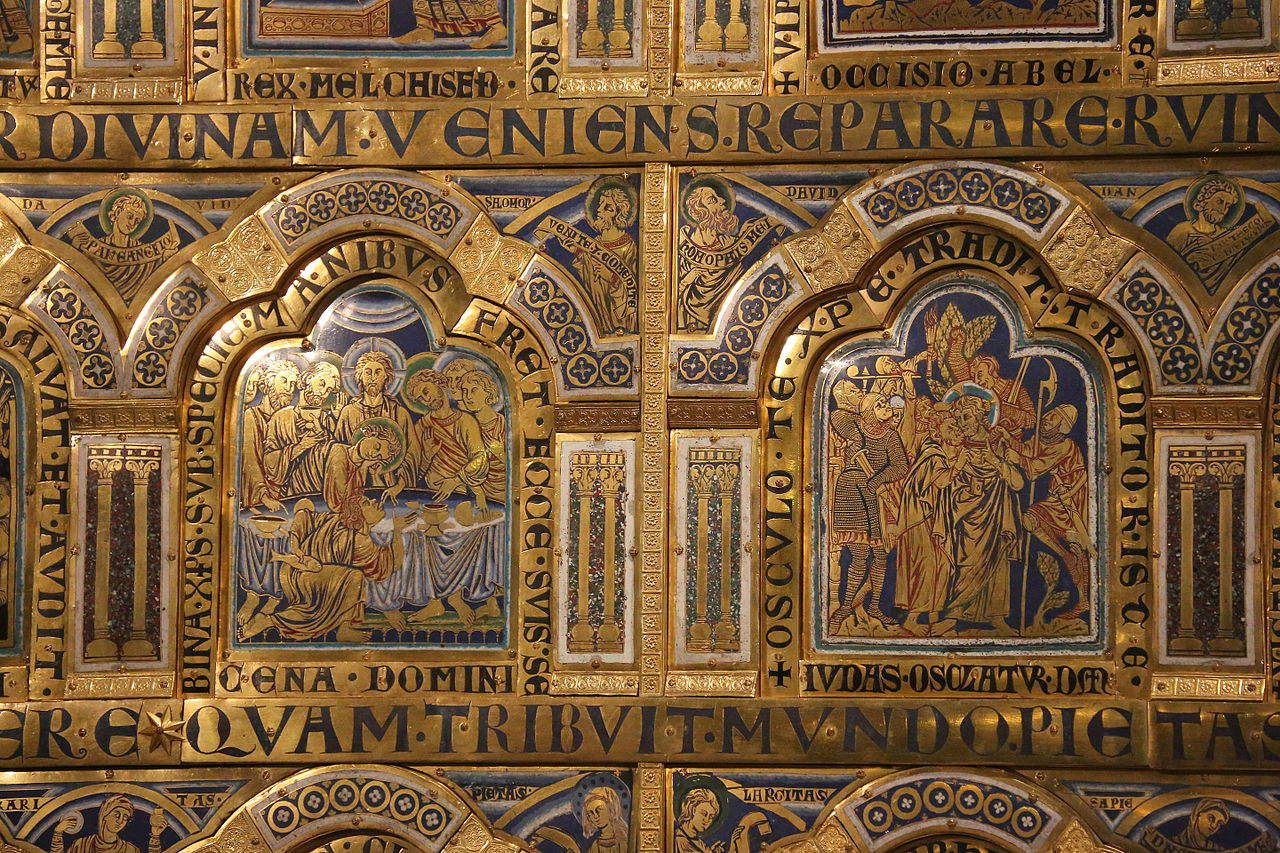 |
| Altar of Klosterneuburg, detail with Last Supper and Capture of Christ |
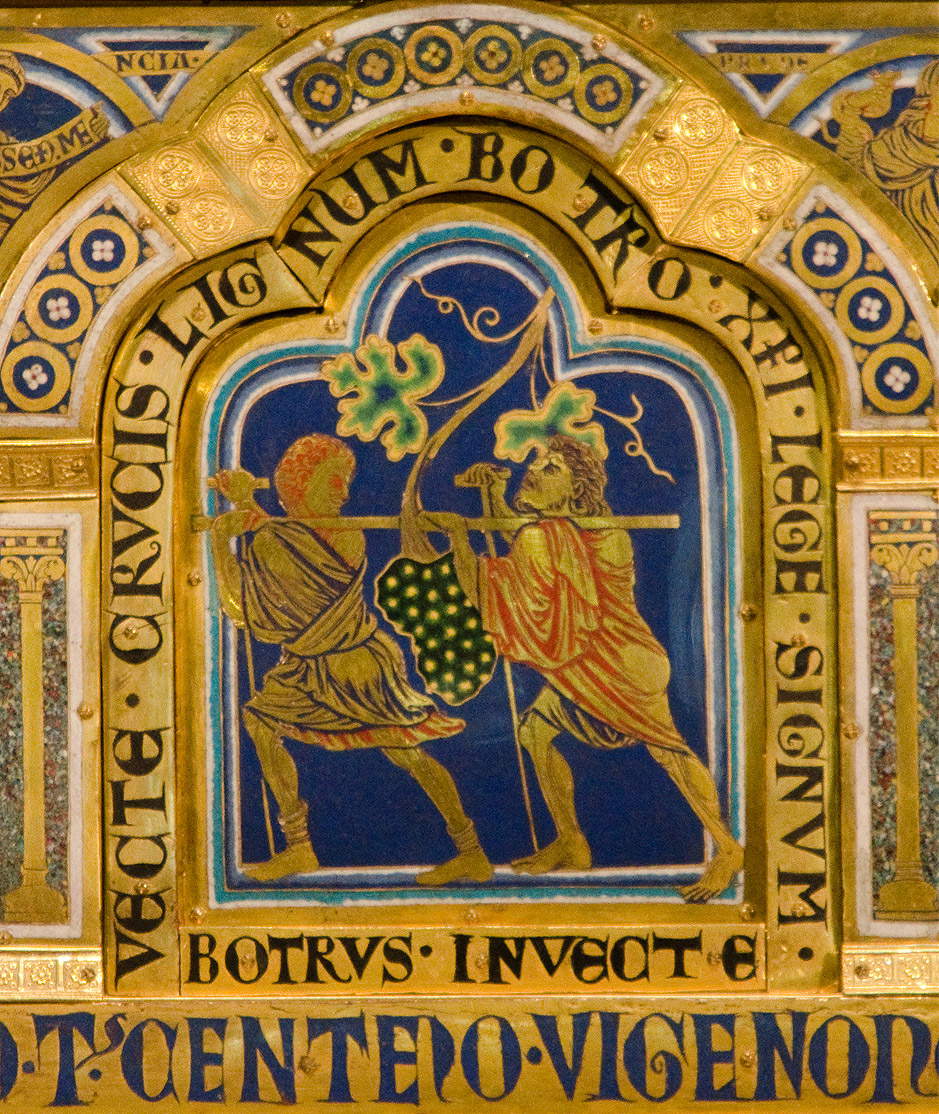 |
| Klosterneuburg Altar, detail with explorers and grapes |
 |
| Klosterneuburg Altar, detail with the bronze sea |
The iconographic program is an overview of the divine plan of salvation. Indeed, we are faced with a typological cycle, in which the correspondences between episodes from the Old and New Testaments are made explicit. The upper zone illustrates scenes ante Legem, that is, before the Mosaic Law, and includes the period from Creation to Moses. The lower zone, on the other hand, is sub Legem and indicates the space of time between the delivery of the tablets of the Law to Moses on Mount Sinai until the conclusion of the events present in the Old Testament. In this period, divine revelation remains limited to the people of Israel. Finally, the central area illustrates the sub Gratia period, the messianic age in which we still live today,in which the Old Testament examples find fulfillment in the New Covenant. The episodes, placed in parallel, are to be read vertically.
Stylistically,this work presents great novelties:it bears witness to an important wind of renewal in continental art,and a stylistic evolution can be observed between the earliest stories and the latest. Already from the general layout of the plates one can perceive the classical tendency of the Mosan school, which sees in Nicolas de Verdun its triumphant epilogue. The framing of the scenes is fully bearer of this classical recovery, which in the scenes is declined in the return to naturalism of what is depicted. These figures have a new naturalness in their gestures and attitudes and have freedom in their movements, anticipating outcomes of the sculpture of the following century. For example, the Queen of Sheba with her hanchement presents a solution that will become a hallmark of a part of Gothic statuary. In some cases, one can see how the figures go beyond the frames within which they are placed, thus demonstrating great freedom with respect to the spatial component as well. Beneath the draperies of the biblical figures depicted, the bodies have their own solid volumetry. Roberto Longhi, in his Judgment on the Thirteenth Century, speaking of these enamels, which he recognizes as a pinnacle of medieval painting, speaks of “sheer violence” and “energetic desolation,” of a style that breaks with earlier tradition. The 13th century would see precisely a new focus on nature that had been forgotten until then.
The Meuse area, a thriving place for the activity of goldsmiths and enamellers, during the 12th century already presented a Classical tradition that broke with the Romanesque tradition, in which the stylization of figures was prevalent. Nicolas must not have been indifferent to a work like the baptismal font in the church of St. Bartholomew in Liège made by the goldsmith Renier de Huy. The bronze basin, above whose surface are depicted the Baptism of Christ and four other episodes related to the baptismal rite, rested on twelve bull protomes (today two are lost), characterized by a marked realism. This detail compares fruitfully with the altar enamel depicting the Bronze Sea episode, in reference to the lustral basin requested by King Solomon and described in detail in the Bible: the circular basin was in fact supported by twelve bull figures. Two other probable stylistic influences relate to two centers, equidistant from Verdun, mentioned earlier, which had been at the center of the Carolingian revival: Metz, renowned for ivory production, and Rheims, which was particularly distinguished for its miniature painting.
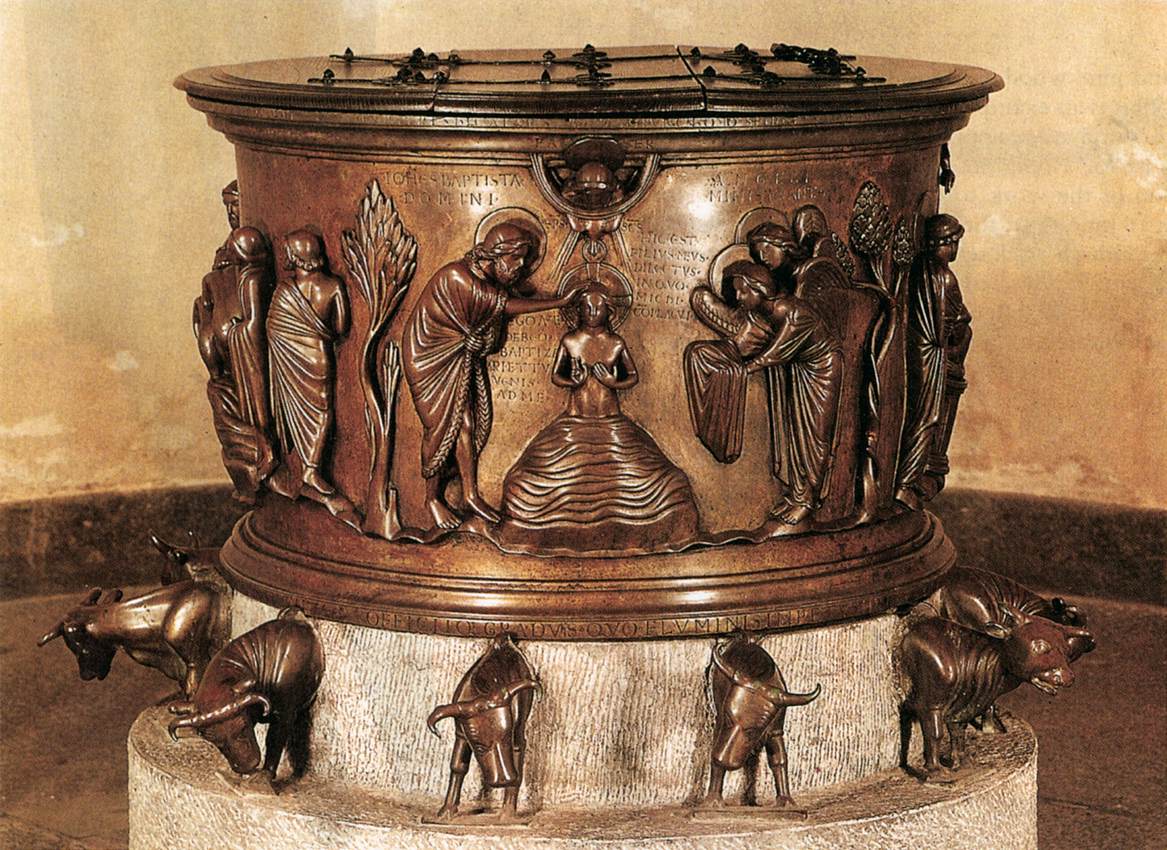 |
| Renier de Huy, Baptismal Basin (1107-1118; bronze; Liège, St. Bartholomew’s). |
The dedicatory title also indicates the date of completion of the work, 1181, but we can assume that it took several years to complete. It should also be noted that no artistic episodes influenced by this work developed in the area around Klosterneuburg: we can assume, therefore, that Nicolas did not have a workshop here.
If the altar is considered a work with a pictorial character, in the Dreikönigenschrein, the reliquary of the Magi kept in the Cologne Cathedral, the sculptural aspect certainly predominates. This work is not signed, nor are any documentary attestations known, at least until today, in reference to Nicolas de Verdun: in fact, the work is likened to him for profound stylistic reasons. The break with the earlier figurative tradition that was already visible in the artifact made for Klosterneuburg is even more explicit here. This sumptuouscasket-reliquary, was conceived as a micro-architecture according to a model widespread in the Mosan area: in the specifics of this work, we are faced with a three-aisled basilica with a double-order facade. On the sides, within three-lobed arches on the first level and round arches on the second, are inserted small sculptures of incredible workmanship depicting prophets, patriarchs and apostles. We seem to see some of the figures of the altar transposed three-dimensionally: these sculptures are shaken by a new energy, a new quiver that stirs them, giving them vitality. It is even more evident how Nicolas achieves solutions in advance of the sculpture outcomes of later decades, such as certain sculptures from Chartres and Reims.
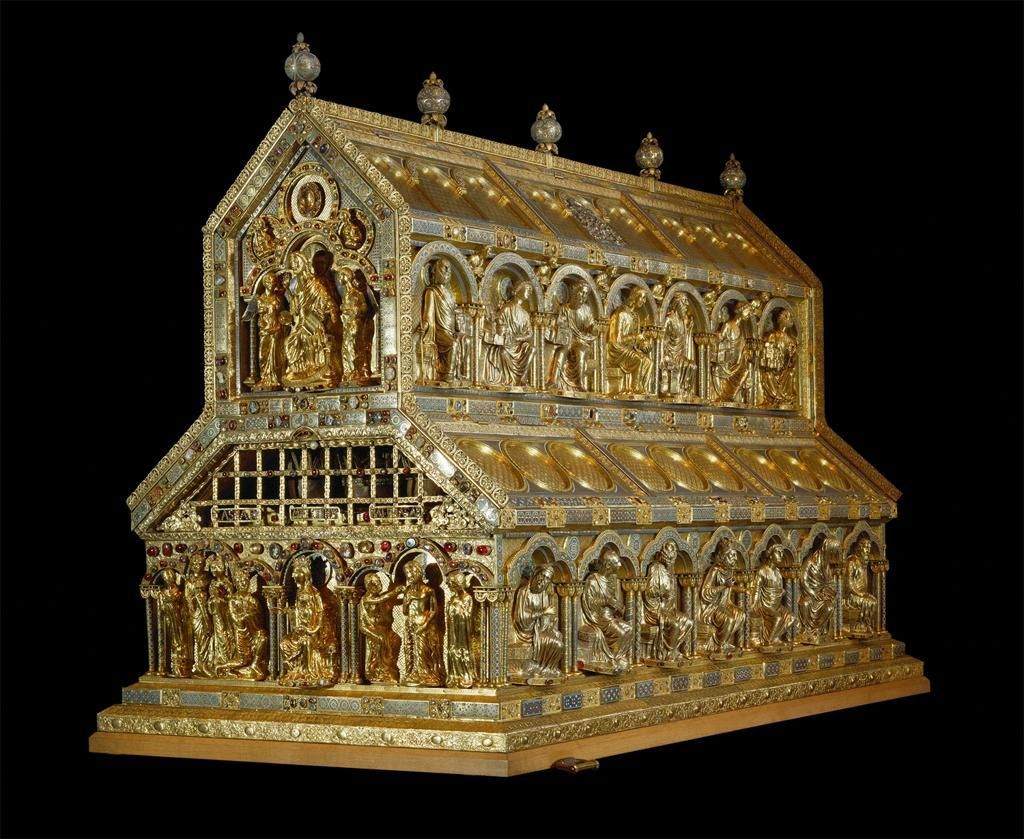 |
| Nicolas de Verdun, Reliquary of the Magi (late 12th-early 13th century; oak wood, gold, argenzo, copper, enamel, jewels, 115 x 112 x 224 cm; Cologne, Cathedral) |
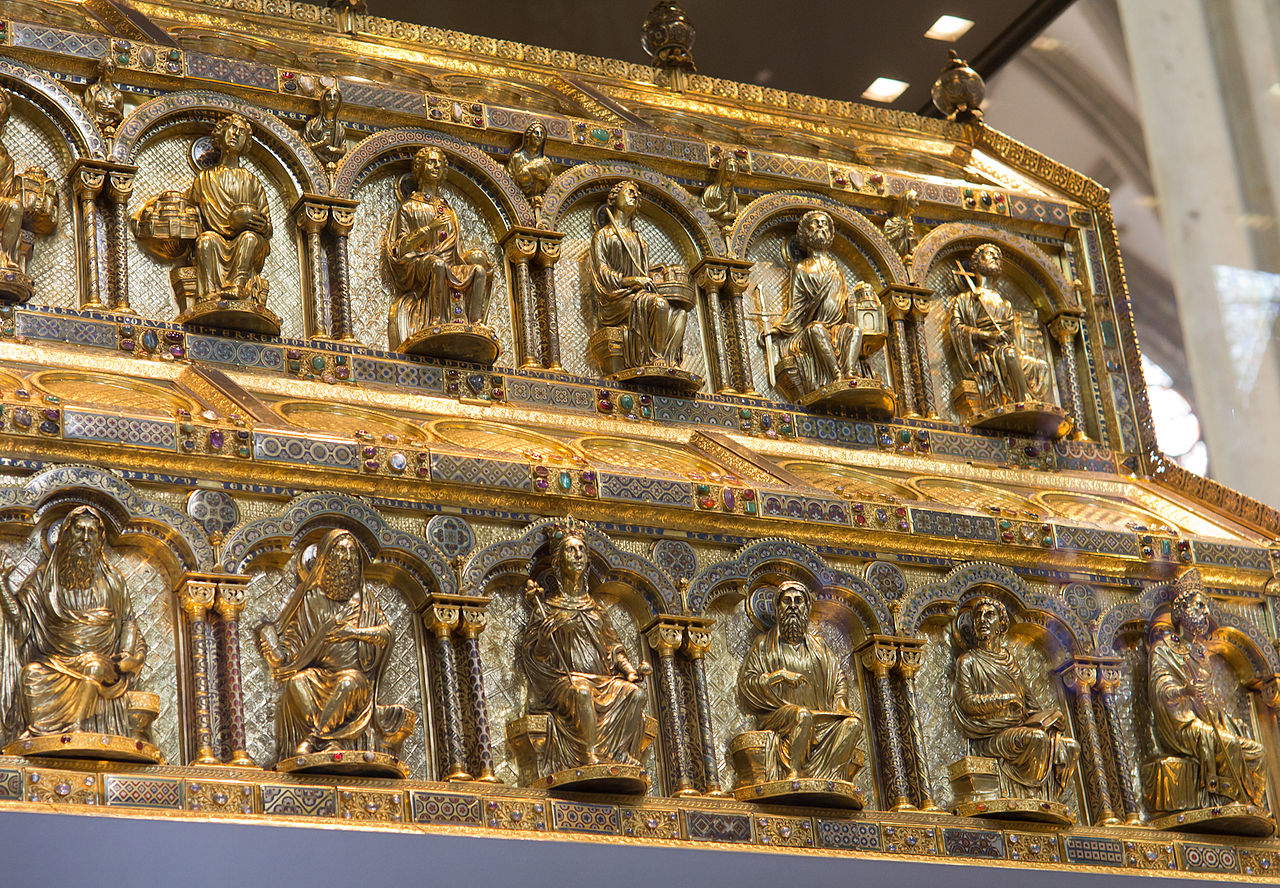 |
| Detail of the reliquary of the Magi |
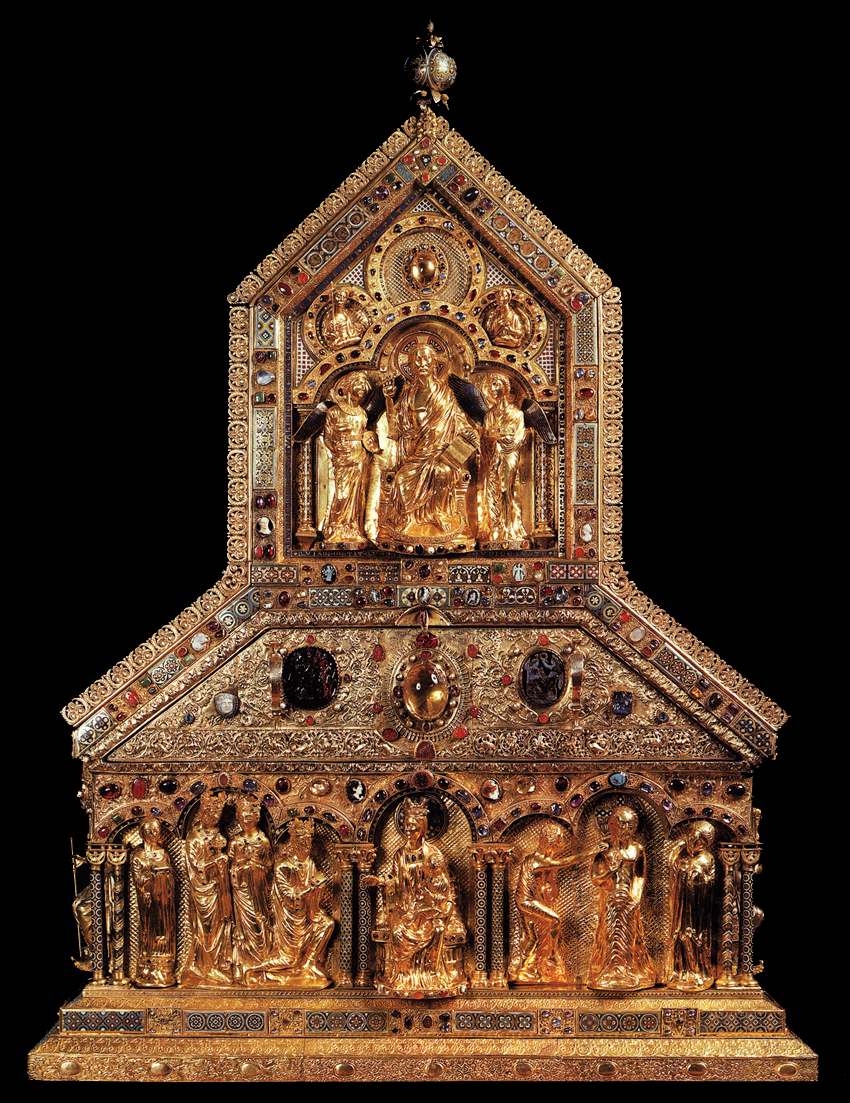 |
| The front of the reliquary of the Magi |
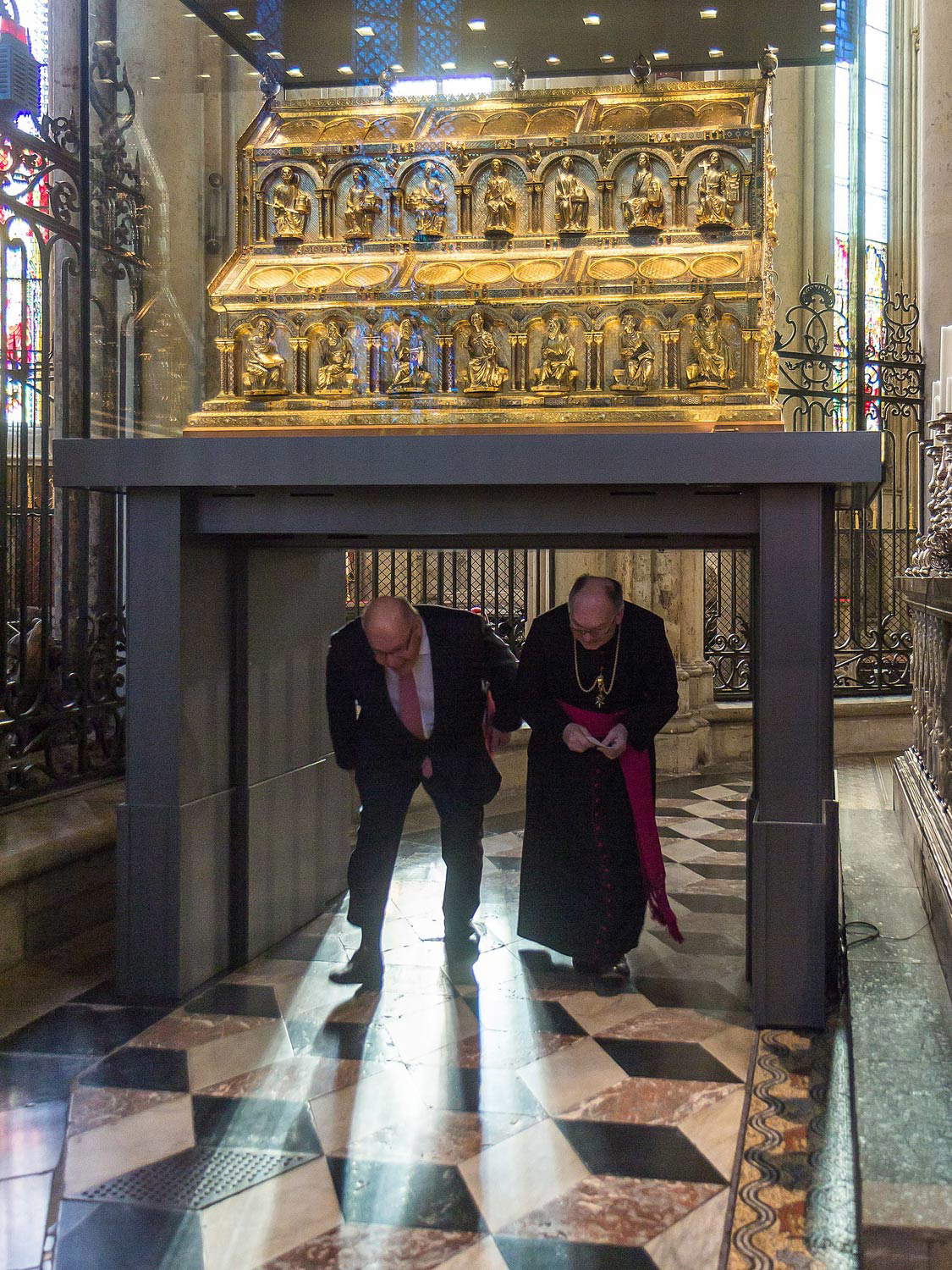 |
| The reliquary of the Magi in Cologne Cathedral. Photo by Raimond Spekking |
If the plastic aspect is the most striking, the technical complexity of such a work should not be overlooked, in which the goldsmiths who worked on it demonstrated their great competence and skill by using various techniques peculiar to goldsmithing but also to sculpture: enamels, semi-precious hard stones and even cameos can be recognized there. The chronology of this work is debated and highly uncertain. In 1164 Emperor Frederick I Barbarossa conquered and sacked Milan: on that occasion the archbishop of Cologne, Rainaldo of Dassel, took away from the sarcophagus where the alleged relics of the Magi were kept in the Basilica of Sant’Eustorgio. After 1198, the year of his coronation, Emperor Otto IV donated gold and gems for the making of this reliquary: the ruler had himself depicted on the front of the reliquary. Nicolas’s intervention is certain in the sculptures of the lower level and the entire project can perhaps be traced back to him, which nevertheless sees a chronology dilated in time and probably the intervention of several hands.
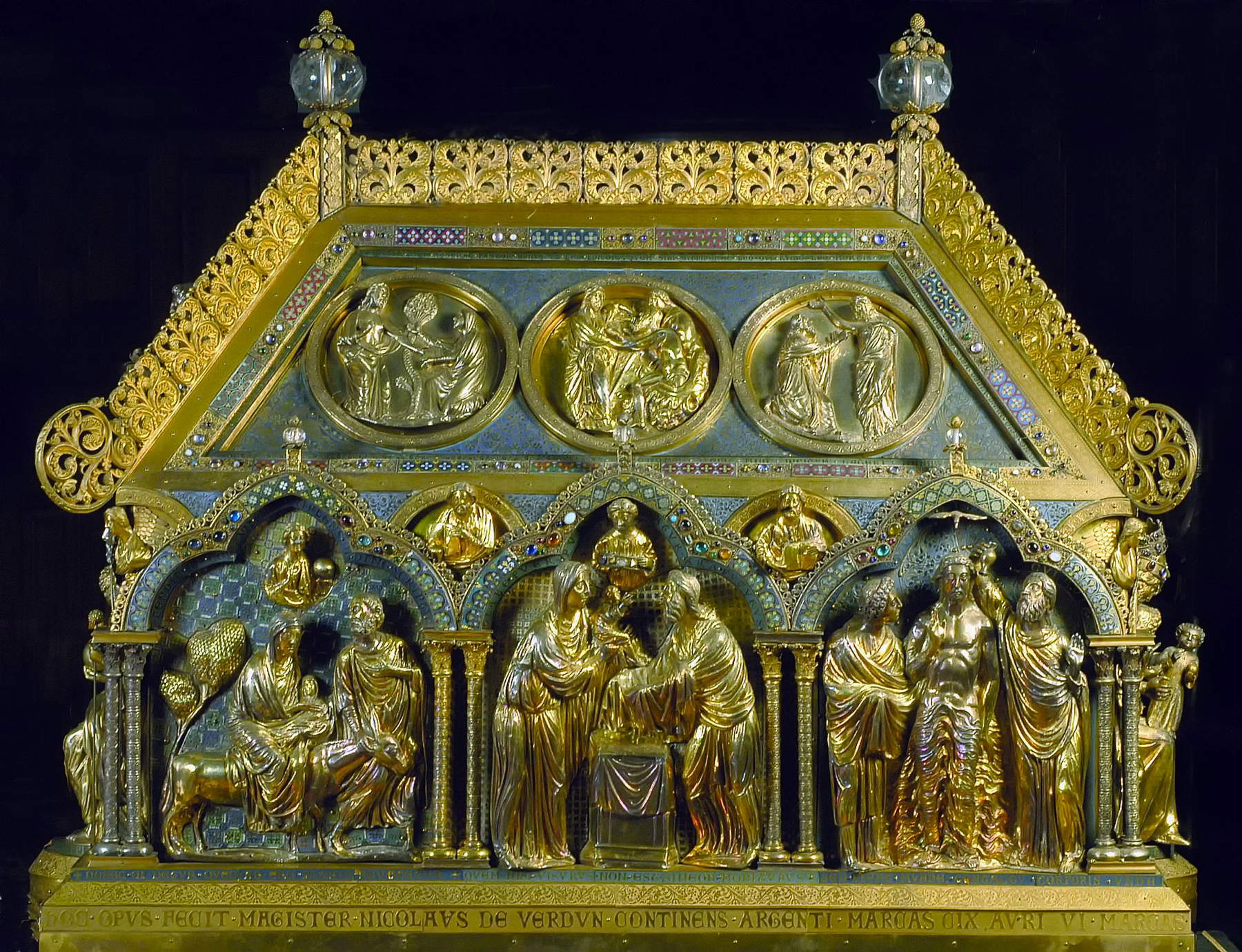 |
| Nicolas de Verdun, Reliquary of Tournai (1205; Tournai, Notre-Dame). |
The reliquary of Notre-Dame in Tournai is also juxtaposed to the Mosan goldsmith: in this case there is an inscription, albeit a 19th-century copy, indicating the name of the artist and the chronology of this work (1205). In Tournai we are faced with a rectangular case with a sloping roof, in which the classical setting is clearly recognizable.
It is in the field of goldsmithing, which at this time is the guiding art, that the ground is being prepared for the advent of the Gothic style, through this intermediary style, known as the “1200 style,” of which Nicolas de Verdun turns out to be the principal and earliest interpreter. Nicolas was not only a goldsmith, but was able with his extraordinary artistic gifts to compete with the painters and sculptors of the time, and must be regarded as one of the greatest geniuses of Western medieval art.
Warning: the translation into English of the original Italian article was created using automatic tools. We undertake to review all articles, but we do not guarantee the total absence of inaccuracies in the translation due to the program. You can find the original by clicking on the ITA button. If you find any mistake,please contact us.